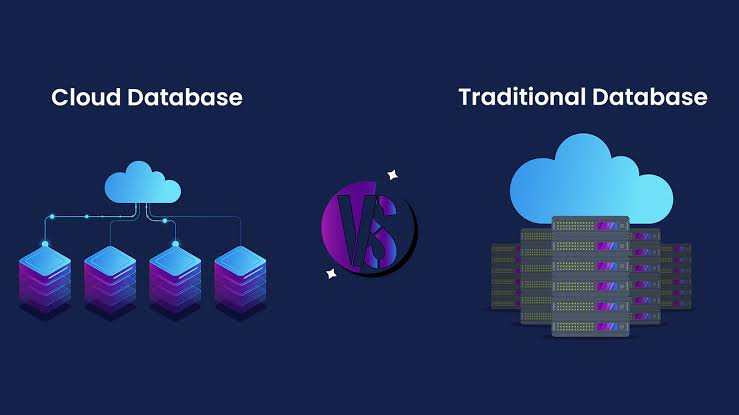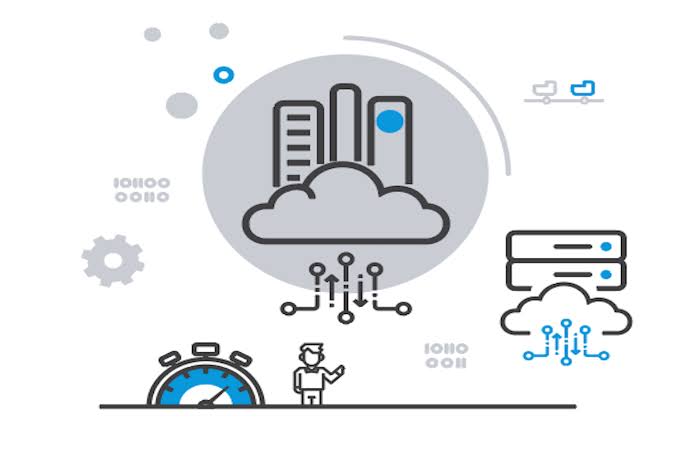In the digital era, businesses are immersed in a deluge of data. The volume, velocity, and variety of information generated have reached unprecedented levels. This surge in data necessitates a robust and scalable approach to storage and management. Traditional on-premise databases, while reliable, often fall short in adapting to the ever-growing data demands of modern enterprises.
Enter the era of cloud-based databases—a paradigm shift that not only addresses the limitations of on-premise solutions but also opens doors to unparalleled scalability, flexibility, and cost-effectiveness. The importance of scalable data storage extends beyond mere convenience; it underpins the foundation of innovation, agility, and competitive advantage in the digital ecosystem. As organizations grapple with the challenge of not just storing but efficiently utilizing their data, the role of cloud-based databases becomes increasingly pivotal. In this blog post, we will look into the world of scalable data storage and explore how cloud-based databases can be leveraged to meet the demands of growing datasets.
An Overview of Cloud-based Databases

Cloud-based databases, as the name suggests, are databases that are hosted on cloud infrastructure. Unlike traditional on-premise databases, cloud databases are accessible over the internet, offering increased flexibility and scalability. They leverage the resources of a cloud service provider, allowing businesses to scale their databases seamlessly as their data requirements evolve.
One defining characteristic of cloud databases is their on-demand nature. Users can provision and scale database resources based on their current needs, avoiding the limitations associated with fixed on-premise infrastructure.
Comparison with Traditional Databases

In contrast to on-premise databases that require significant upfront investment and maintenance, cloud-based databases offer a pay-as-you-go model. This eliminates the need for extensive hardware provisioning and allows businesses to allocate resources more efficiently. Cloud databases also provide greater accessibility, enabling users to access and manage their data from anywhere in the world.
Advantages of Cloud-based Databases
- The advantages of cloud-based databases go beyond cost savings and accessibility.
- Scalability is a key factor.
- As datasets grow, cloud databases offer horizontal and vertical scaling options.
- Horizontal scaling involves adding more servers to distribute the load, while vertical scaling involves increasing the resources of a single server.
Key Features of Scalable Cloud Databases

Horizontal Scaling vs. Vertical Scaling
Horizontal scaling is a fundamental feature of scalable cloud databases. Instead of relying on a single powerful server, horizontal scaling involves distributing the database load across multiple servers. This approach is particularly beneficial for handling increased workloads and ensuring high availability.
python
# Sample code for horizontal scaling in a cloud-based database (using MongoDB as an example)
from pymongo import MongoClient
# Connection parameters
primary_server = “primary_server_url”
secondary_servers = [“secondary_server1_url”, “secondary_server2_url”]
# Connecting to the primary server
client = MongoClient(primary_server)
primary_db = client[“primary_database”]
# Connecting to secondary servers
for server_url in secondary_servers:
secondary_client = MongoClient(server_url)
secondary_db = secondary_client[“secondary_database”]
# Perform operations on secondary databases as needed
Auto-scaling Capabilities
Auto-scaling is another powerful feature that cloud databases provide. With auto-scaling, the database system can automatically adjust its capacity based on the current workload. This ensures optimal performance and resource utilization, even during peak usage periods.
Data Partitioning and Sharding
Data partitioning, or sharding, involves dividing a large database into smaller, more manageable parts called shards. Each shard is stored on a separate server, allowing for parallel processing and improved query performance.
python
# Sample code for data partitioning in a cloud-based database (using Cassandra as an example)
from cassandra.cluster import Cluster
# Connection parameters
cluster = Cluster([‘node1’, ‘node2’, ‘node3’])
session = cluster.connect(‘your_keyspace’)
# Data partitioning logic
session.execute(“””
CREATE TABLE your_table (
id UUID PRIMARY KEY,
data text
)
WITH
CLUSTERING ORDER BY (data ASC)
“””)
Popular Cloud-based Database Services
Several major cloud providers offer robust database services, each with its strengths and use cases.
- Amazon Web Services (AWS) provides Amazon Aurora, a MySQL and PostgreSQL-compatible relational database service.
- Microsoft Azure offers Cosmos DB, a multi-model, globally distributed database service.
- Google Cloud’s Spanner is a globally distributed, strongly consistent database.
Choosing the Right Database Service
The choice of a cloud-based database service depends on factors such as the nature of the data, scalability requirements, and the specific use case. For example, if your application requires strong consistency and global distribution, Google Cloud Spanner might be the ideal choice.
python
# Sample code for connecting to a cloud-based database (using Python and MongoDB as an example)
from pymongo import MongoClient
# Connection parameters
database_url = “your_cloud_database_url”
client = MongoClient(database_url)
# Accessing a database
db = client[“your_database_name”]
Implementation Considerations
Migrating to a Cloud-based Database

Migrating from an on-premise database to a cloud-based solution requires careful planning. Considerations include data integrity, downtime, and the compatibility of database schemas. Tools like AWS Database Migration Service (DMS) can simplify the migration process.
python
# Sample code for data migration (using AWS Database Migration Service as an example)
# Code for migrating data from an on-premise database to Amazon RDS
# …
# Code for validating the migration
# …
Ensuring Data Security and Compliance
As data moves to the cloud, ensuring its security and compliance with regulations becomes critical. Implementing encryption, access controls, and regular audits are essential components of a robust data security strategy.
Case Studies of Successful Implementation
Numerous organizations have successfully implemented scalable cloud databases. One such example is Netflix, which uses Amazon DynamoDB for its scalability and seamless integration with other AWS services. The transition allowed Netflix to handle massive amounts of data and scale its infrastructure to meet the demands of a global audience.
Challenges and Lessons Learned
While success stories abound, challenges in implementation are inevitable. Learning from the experiences of others can provide valuable insights. Common challenges include
- The optimizing queries for distributed architectures.
- Managing the different complexities of a globally distributed database.
Best Practices for Optimizing Scalability
Query Optimization and Indexing
Efficient query performance is crucial for scalable databases. Proper indexing and optimizing queries ensure that the database can handle increasing workloads without sacrificing responsiveness.
python
# Sample code for optimizing database queries (using SQL as an example)
# …
Monitoring and Managing Scalability
Regular monitoring of database performance is essential. Cloud providers often offer monitoring tools that allow users to track resource utilization, identify bottlenecks, and make informed decisions to optimize scalability.
Conclusion
In conclusion, scalable data storage is a cornerstone of modern business operations. Cloud-based databases provide the necessary infrastructure to meet the evolving demands of data growth. By understanding key features, exploring popular services, and implementing best practices, businesses can leverage scalable cloud databases to drive innovation and remain competitive in the data-driven landscape.






Add comment